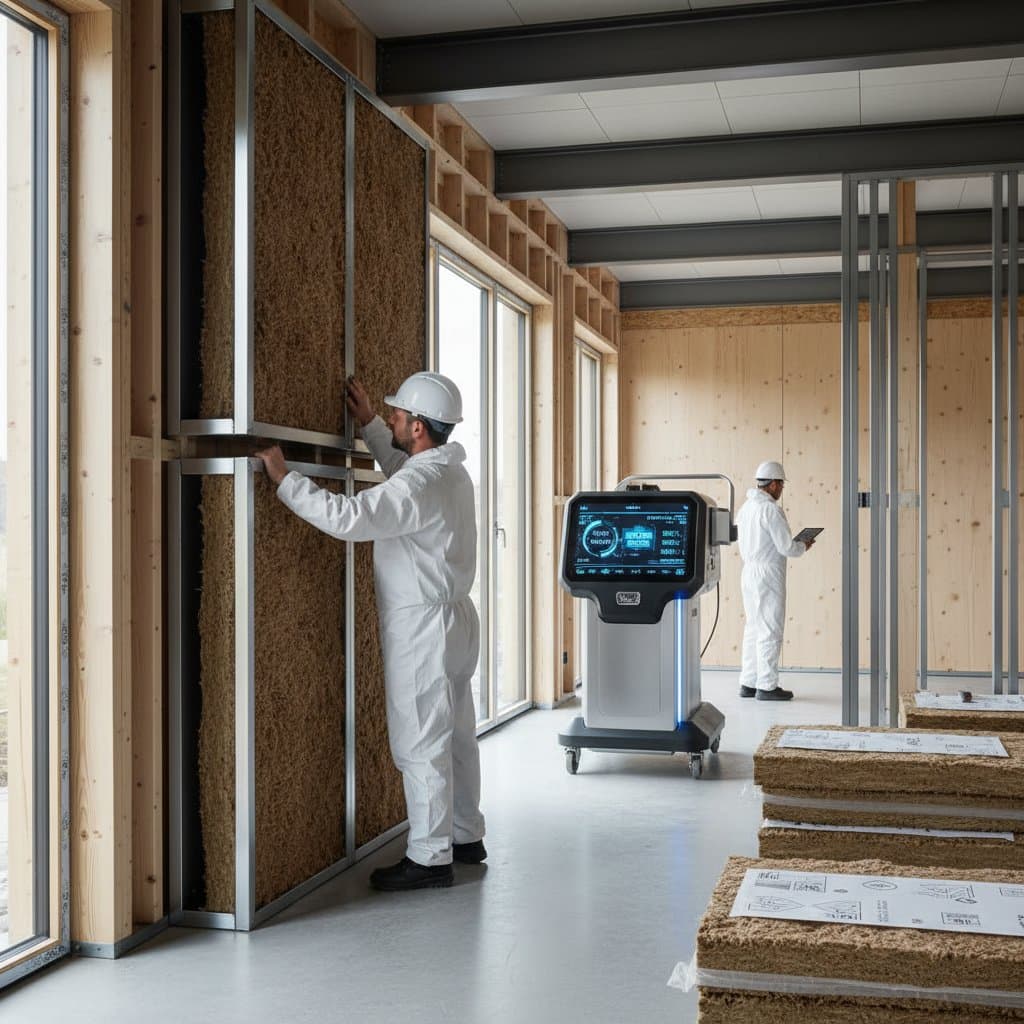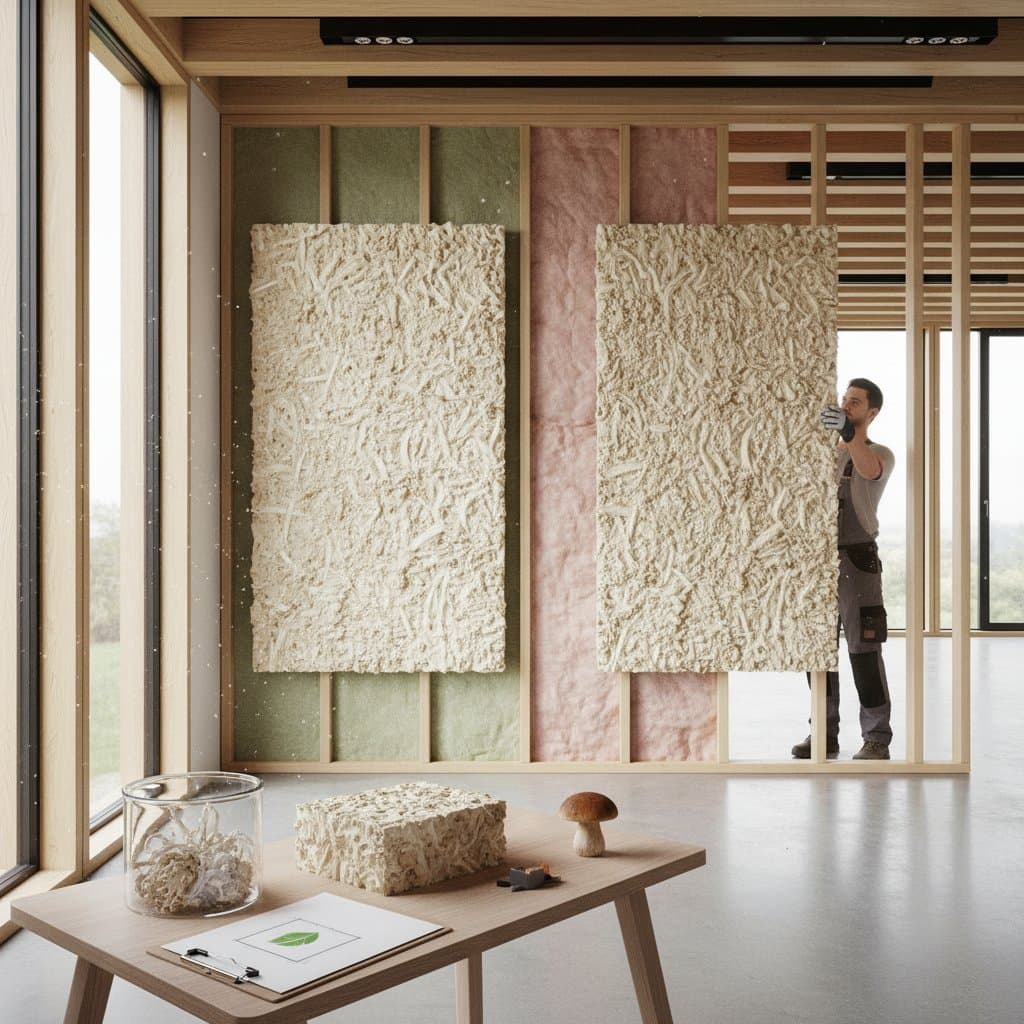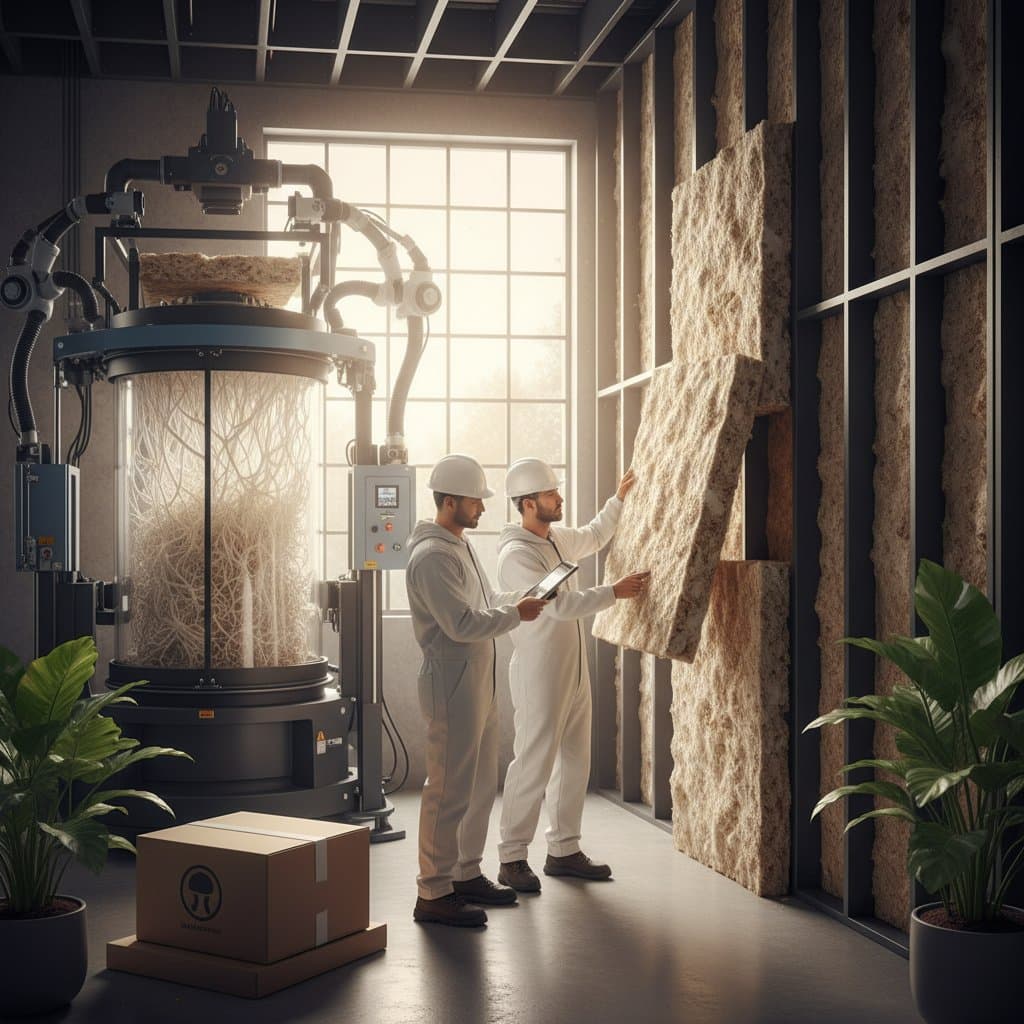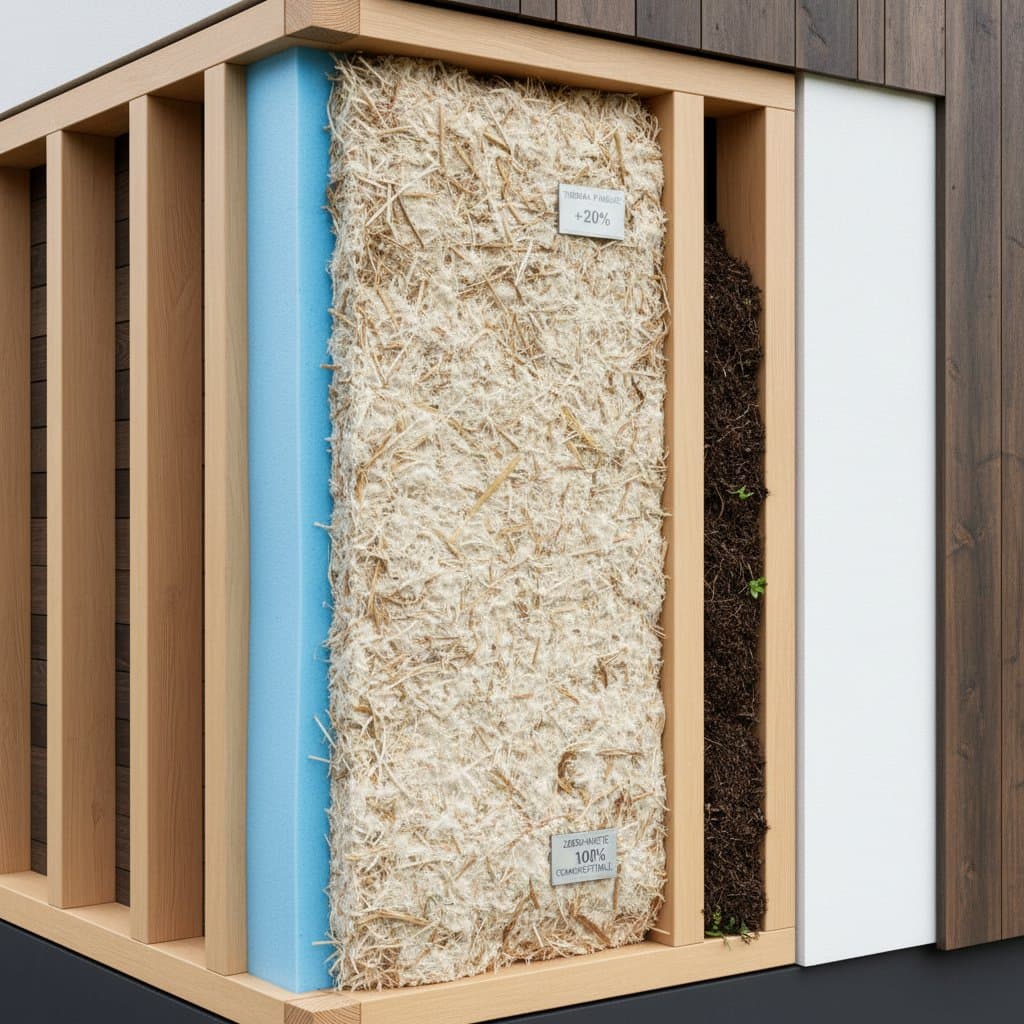Mycelium Insulation Cuts Cooling Costs by 50 Percent
Rising temperatures often lead to higher energy bills, prompting homeowners and building managers to seek effective ways to maintain cool interiors without excessive spending. Mycelium, the root-like network of mushrooms, emerges as a bio-based insulation material with remarkable potential. This natural option can reduce cooling costs by up to 50 percent compared to conventional alternatives.
Key Benefits
- Energy Savings: Structures insulated with mycelium experience cooling cost reductions of up to 50 percent relative to fiberglass or foam materials.
- Thermal Performance: The cellular structure of mycelium offers high resistance to heat flow, sustaining cooler indoor environments over extended periods.
- Environmental Advantages: Fully biodegradable and renewable, mycelium insulation minimizes carbon emissions throughout its lifecycle.
- Health and Safety: Panels resist fire naturally, remain non-toxic, and avoid synthetic chemicals that release volatile organic compounds.
- Market Viability: Improved manufacturing processes and quality controls render mycelium insulation suitable for both commercial and residential applications.
Properties That Position Mycelium as a Breakthrough
Mycelium consists of a dense, thread-like fungal network. In controlled settings, it expands around substrates like corn husks or sawdust. After drying, it forms a lightweight, rigid material resembling foam.
This microstructure captures air effectively, yielding strong insulation properties. Research from sustainable building organizations indicates that mycelium achieves R-values equal to or exceeding those of many petroleum-derived foams. The R-value quantifies resistance to heat transfer; elevated values signify superior insulation.
Mycelium sustains performance amid varying humidity and temperature levels, ideal for hot, humid regions where other materials falter. According to findings from the Bio-Based Materials Research Association, these panels preserve more than 90 percent of thermal resistance after prolonged use, unlike certain synthetic foams that decline by up to 30 percent. Such durability lowers cooling demands, eases HVAC system loads, and extends equipment longevity.
Mechanisms Behind Substantial Cooling Savings
Mycelium's cooling effectiveness stems from its physical and biological traits. The intricate microstructure impedes heat movement, functioning as a barrier. Distinct from plastic foams, mycelium resists softening or melting in heat, ensuring reliable operation.
A study by the Sustainable Construction Institute examined a test home with mycelium panels, which consumed roughly half the air conditioning energy of a comparable fiberglass-insulated home. This outcome arose from diminished thermal bridging, where heat infiltrates through structural gaps. Mycelium's moldable, adhesive qualities enable seamless fitting, reducing such vulnerabilities.
Additionally, mycelium manages moisture by absorbing and releasing vapor naturally. This process maintains drier, cooler indoor air, lessening reliance on dehumidifiers. In humid climates, these features yield tangible reductions in monthly expenses.
Mycelium Versus Traditional Insulation Options
| Property | Mycelium Insulation | Fiberglass | Polyurethane Foam |
|---|---|---|---|
| Thermal Resistance (R-value) | High (matches or exceeds PU foam) | Moderate | High |
| Moisture Control | Excellent natural regulation | Poor | Low |
| Fire Resistance | Inherent resistance | Requires additives | Requires additives |
| Environmental Impact | Fully biodegradable | High embodied energy | Fossil fuel derived |
| Indoor Air Quality | Non-toxic, no VOCs | Releases particulates | Emits VOCs if unsealed |
| End-of-Life Disposal | Compostable | Landfill | Landfill |
Mycelium holds its own against synthetics in performance metrics while excelling in ecological aspects. Its thermal efficiency paired with carbon-neutral production appeals to sustainable building practices.
Evaluating Costs and Return on Investment
Initial costs for mycelium insulation exceed fiberglass by 10 to 15 percent per square foot. However, operational savings quickly offset this premium.
Life-cycle analyses by green building groups project payback within three to five years via energy reductions. Bio-based incentives and certifications can boost annual returns beyond 20 percent.
Commercial properties, with substantial cooling expenses, realize thousands in yearly savings. Homeowners benefit from diminished bills and enhanced comfort. Mycelium avoids the degradation and off-gassing of synthetics, eliminating ongoing maintenance expenses.
Enhancing Sustainability and Indoor Well-Being
Mycelium fosters healthier spaces beyond mere efficiency. Grown without chemical processes, it omits formaldehyde, retardants, or volatiles that compromise air quality.
Dr. Lena Ortiz, an environmental architect focused on green materials, states, "Mycelium insulation represents a turning point for sustainable architecture. It combines natural performance with human comfort in a way that few materials can."
Production utilizes agricultural waste, diverting it from landfills and curbing methane release. One cubic meter sequesters carbon equivalent to several kilograms, achieving carbon-negative status in optimized systems.
Addressing Adoption Barriers
Despite rising interest, mycelium encounters production scaling and familiarity issues. Growth demands precise environments, and widespread supply requires capital. Installers familiar with foams or batts must adapt to mycelium's texture.
Startups collaborate with suppliers to standardize integration, offering prefabricated panels compatible with conventional framing. These solutions permit use of standard tools, streamlining workflows.
Regulatory approval hinges on certification. Mycelium's fire resistance and thermal consistency accelerate acceptance in various jurisdictions.
Steps to Integrate Mycelium in Your Project
For renovations or new constructions, assess your building's thermal barriers to pinpoint heat loss areas. Incorporate mycelium panels in attics, walls, or floors to elevate cooling performance.
Consult certified suppliers for material specifications and installation guidance. Track energy use pre- and post-installation to quantify savings. This approach yields financial gains alongside environmental contributions.







